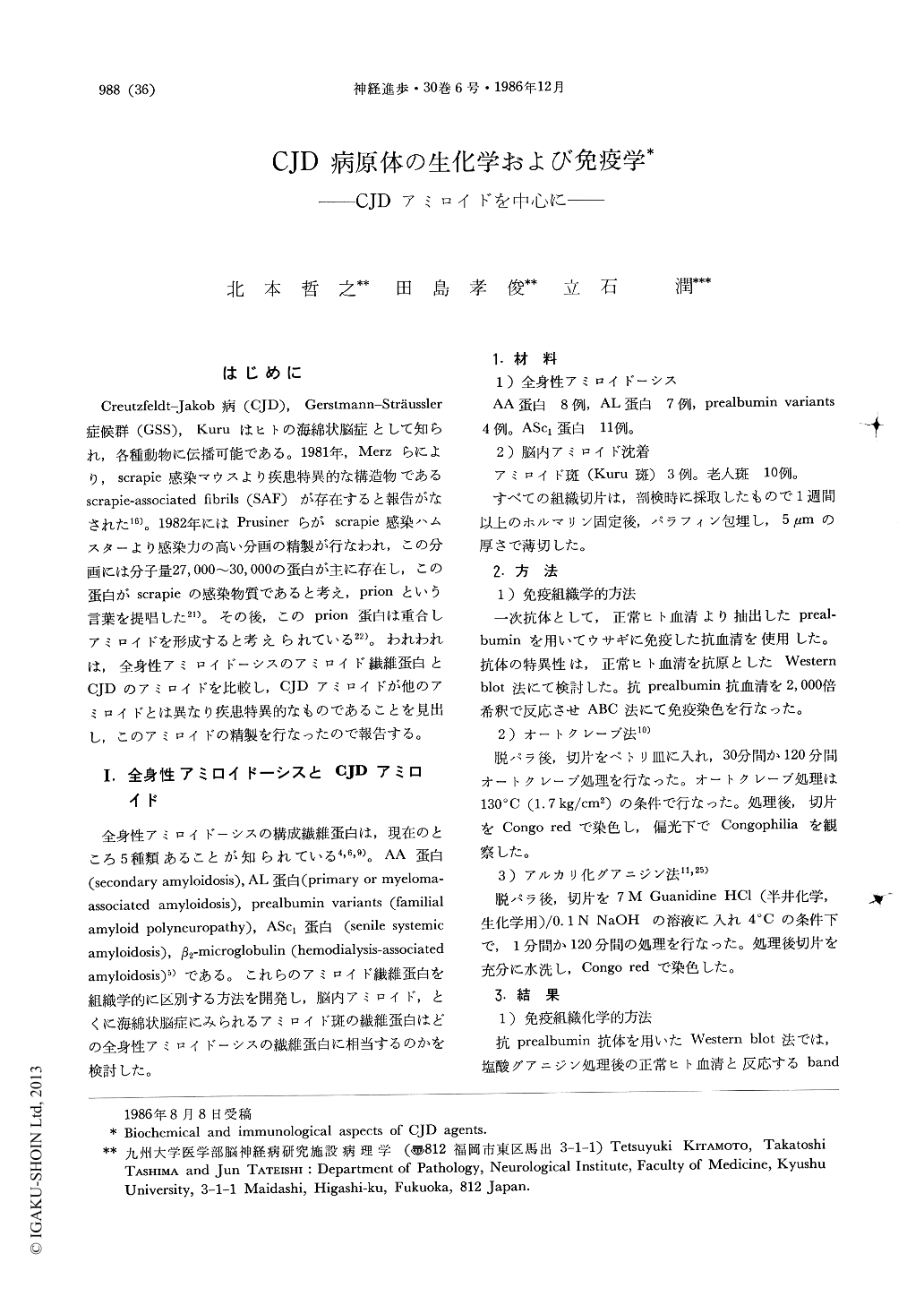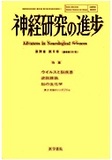Japanese
English
- 有料閲覧
- Abstract 文献概要
- 1ページ目 Look Inside
はじめに
Creutzfeldt-Jakob病(CJD),Gerstmann-Sträussler症候群(GSS),Kuruはヒトの海綿状脳症として知られ,各種動物に伝播可能である。1981年,Merzらにより,scrapie感染マウスより疾患特異的な構造物であるscrapie-associated fibrils(SAF)が存在すると報告がなされた16)。1982年にはPrusinerらがscrapie感染ハムスターより感染力の高い分画の精製が行なわれ,この分画には分子量27,000〜30,000の蛋白が主に存在し,この蛋白がscrapieの感染物質であると考え,prionという言葉を提唱した21)。その後,このprion蛋白は重合しアミロイドを形成すると考えられている22)。われわれは,全身性アミロイドーシスのアミロイド繊維蛋白とCJDのアミロイドを比較し,CJDアミロイドが他のアミロイドとは異なり疾患特異的なものであることを見出し,このアミロイドの精製を行なったので報告する。
(I) Systemic amyloidosis and CJD amyloid The immunoperoxidase method, the autoclave method and a newly developed alkaline-guanidine method were used to distinguish different types of amyloid fibril proteins in formalin-fixed, paraffine-embedded tissue sections. These histochemical approaches make it possible to differentiate four forms of systemic amyloidosis and two forms of cerebral amyloid deposits. Amyloid plaques of CJD and GSS are different from senile plaques of Alzheimer's disease and senile dementia. Therefore, amyloid plaque is pathognomonic structure in subacute spongiform encephalopathy.
(II) CJD amyloid and the inactivation treatment

Copyright © 1986, Igaku-Shoin Ltd. All rights reserved.


